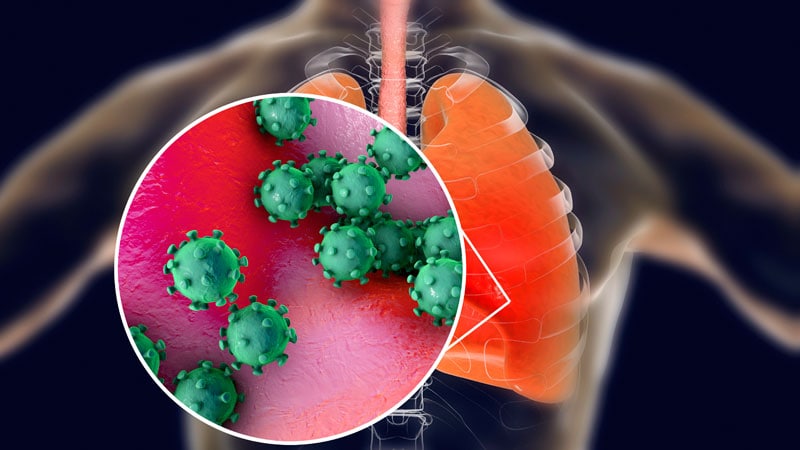Children aged 6 months to 12 years are the main spreaders of respiratory syncytial virus (RSV) infections within their households, based on data from more than 3000 individuals.
Previous studies have suggested that household transmission of RSV may contribute to community spread, but data on transmission of the virus within households are limited, wrote Sarah N. Cox, MD, of the University of Seattle, Seattle, Washington, and colleagues.
“With the recent introduction of new vaccines and monoclonal antibodies to prevent RSV-associated lower respiratory tract disease, updated demographic, clinical, and household characteristics that impact household transmission dynamics are critical for identifying specific populations for preventative measures,” the researchers wrote.
In a study published in Clinical Infectious Diseases, the researchers examined drivers of household transmission by collecting nasal swabs, survey data, and antibody data from 3100 adults and children in 200 households in the United States between June 2022 and May 2023. The researchers also conducted viral genome sequencing to investigate genomic diversity and increase confidence in the risk for person-to-person transmission.
Overall, the researchers identified RSV in 310 individuals (10%) of the study population, and the majority of cases (94%) were symptomatic. Viral genome sequencing demonstrated that multiple household infections within a 14-day period were likely caused by within-household transmission.
The median ages of index and secondary cases were 6 years and 35 years, respectively, and 89% of the index cases occurred in children aged 6 months to 12 years.
The researchers also identified 37 cases of possible secondary transmission within 14 days of an index case. Children aged 12 years and younger were at an increased risk for secondary RSV than their older family members. Prolonged viral detection in index cases was associated with increased transmission risk. However, the researchers found no association between the risk for household transmission and either index case viral load or the serologic status of index or secondary cases.
The researchers sequenced 120 RSV specimens and found that sequenced viruses from households with at least two RSV infections were similar when occurring within 14 days of the index infection compared with those that occurred after 14 days. These data support within-household transmission as the most likely cause of multiple household infections in the short term, the researchers noted.
The findings were limited by several factors including the reliance on self-reports for symptom and behavior data, potential misclassification of RSV, and incomplete testing of all household members, the researchers noted. However, the results can help identify target populations for prevention and also establish baseline household transmission dynamics for RSV before the introduction of novel RSV vaccines, they concluded.
Data Inform Prevention Strategies
Identifying characteristics and factors that can affect household transmission of RSV can help to target preventative measures both in the household and also in the community setting, said Shirin A. Mazumder, MD, an infectious diseases specialist in Memphis, Tennessee, in an interview.
The study findings reaffirmed the typical pattern of the virus, which is common and spreads easily among children, Mazumder told Medscape Medical News. “The transmission rate to other members of the household was lower than I anticipated, but not all members of the household were enrolled in this study, which may have impacted the true secondary attack rate,” she noted.
Since children younger than 12 years were the most likely group to introduce RSV into a household, preventative measures such as promoting and teaching good hand hygiene to children and encouraging them to cover coughs and sneezes can help reduce the risk and spread of infection, said Mazumder.
The current study was unable to capture the peak viral load of the illness, which would allow for a better understanding of the relationship between viral load and risk, Mazumder told Medscape Medical News. “Also, the study was conducted before the introduction of RSV vaccines, and it would be interesting to assess how RSV vaccination impacts the secondary attack rate in a household,” she said.
The study was supported by the Centers for Disease Control and Prevention. Lead author Cox is currently an employee of Pfizer, unrelated to the study, but conducted the study while affiliated with the University of Washington, Seattle. Helen Y. Chu disclosed consulting with Ellume, Pfizer, and the Bill and Melinda Gates Foundation and serving on advisory boards for Vir, Merck, and AbbVie. Chu also disclosed CME teaching with Medscape, Vindico, and Clinical Care Options and received research funding from Gates Ventures and support and reagents from Ellume and Cepheid outside of the submitted work. Mazumder had no financial conflicts to disclose.
Source link : https://www.medscape.com/viewarticle/kids-are-primary-household-respiratory-syncytial-virus-2025a10007sb?src=rss
Author :
Publish date : 2025-04-01 10:43:00
Copyright for syndicated content belongs to the linked Source.
